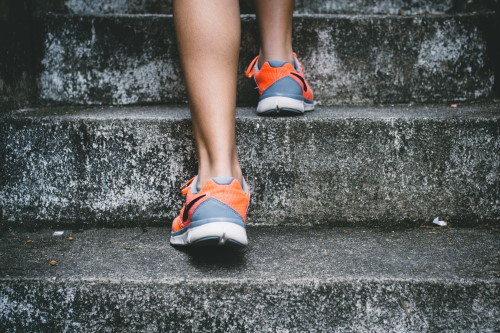A new study from the U.K. shows that people who climbed the stairs reduced their risk of heart disease and early death
Looking for a simple way to improve your heart health and live longer? Skip the elevator or escalator and take the stairs, according to a new U.K. study. Researchers found that people who regularly took the stairs had a lower risk of dying of heart disease and dying from any cause, compared with people who skipped them. The research was presented today at ESC Preventive Cardiology 2024, a scientific congress of the European Society of Cardiology (ESC).
BREAKING: This Keeps Your Blood Sugar Below 100 - Even When You're Eating Sweets!
“Even brief bursts of physical activity have beneficial health impacts, and short bouts of stair climbing should be an achievable target to integrate into daily routines,” said Dr. Paddock.
Any and All Activities Count Toward Your Weekly Physical Activity Goal
Previous recommendations stated that a “bout” of exercise had to last at least 10 minutes to count toward the goal of 150 to 300 minutes per week of moderate physical activity or 75 to 100 minutes of vigorous activity. The updated guidelines, however, changed that to say any activity — even things like a brisk walk across the parking lot or vacuuming the house — can count toward your daily activity goals.
Climbing Stairs Reduced the Risk of Death by Nearly 40 Percent
To find out if something as simple as climbing stairs could reduce the risks of heart disease and premature death, researchers collected the best available evidence and conducted a meta-analysis of nine studies with nearly half a million participants.
Both healthy participants and people with a previous history of heart attack or peripheral arterial disease were included, and ages ranged from 35 to 84 years old.
Compared with not climbing stairs, stair climbing was associated with a 24 percent lower risk of dying from any cause and a 39 percent lower likelihood of dying from heart disease. Taking the stairs was also linked with a reduced risk of heart disease, including heart attack, heart failure, and stroke.
These findings suggest that incorporating stair climbing into your day-to-day life could have protective benefits, said Paddock.
Could some of these benefits exist because people who take the stairs have other healthy habits, including exercising regularly or eating a healthy diet? Maybe, says Paddock. “While our systematic review didn't control for other factors such as diet and other exercise, a lot of the original papers included in the analysis did. This would be an important factor in future studies, especially if we were to objectively measure the optimum quantity and intensity of stair climbing, which I think is important to do,” she says.
How Many Stairs Does It Take to Reap Health Benefits?
“Our study suggested that the more stairs climbed, the greater the benefits, but this needs to be confirmed. So, whether at work, home, or elsewhere, take the stairs,” said Paddock.
Dr. Mehta was not involved in the research.
Those findings showed that short bursts of high-intensity stair climbing could be a time-efficient and easily accessible way to improve cardiorespiratory fitness and blood cholesterol levels, the authors concluded. And unlike more structured exercise activities, there’s no special equipment or gym fees required, they wrote.
It Could Be Difficult for People With Certain Conditions to Start Climbing Stairs
There are certain health conditions that may make climbing stairs difficult, says Mehta. “For example, severe valve disease, severe heart failure, underlying lung conditions, or debilitating joint issues. If someone is unsure about the safety of stair climbing, then they need to speak with their physician,” she says.
5 Flights of Stairs Sound Impossible? Here’s How to Get Started
Given the proven benefits, stair climbing could be a good way to incorporate small bursts of exercise throughout the day and should be achievable for most people, says Mehta.
TRENDING: Shed 42 lbs In 30 Days With This Simple Night-time Pill
She suggests that exercise newbies start out with one flight of stairs and slowly build up their capacity over time. “I think starting with a flight or two and building from there would be wise. We still don't know the optimum number of stairs that need to be climbed daily to protect our heart. Some studies (like the one mentioned above) have suggested that five to six flights per day (50 to 60 stairs) is sufficient,” says Mehta.
If you’re absolutely out of breath after just a flight or two, does this mean you’ve taken on too much or will your body adjust? If you’re completely winded after walking up a flight of stairs or two, it’s important to discuss this with your provider, she says. “Sometimes the shortness of breath could be due to significant medical issues like uncontrolled high blood pressure, or undiagnosed conditions like coronary artery disease, heart failure, or COPD,” says Mehta.
You also may not have any of those things — it’s best to let your provider determine that, she says. “In some cases, being winded could be due to weight gain or deconditioning with incline-related exercise, and could get better as your conditioning improves,” says Mehta.









